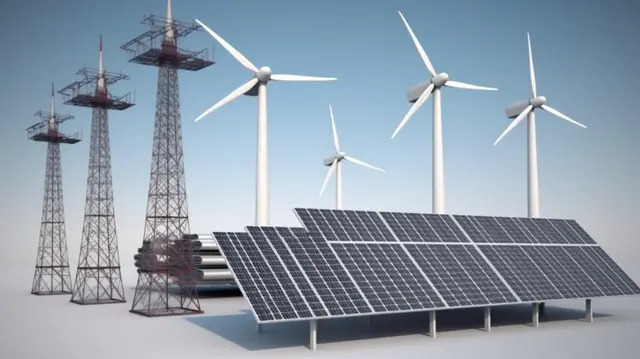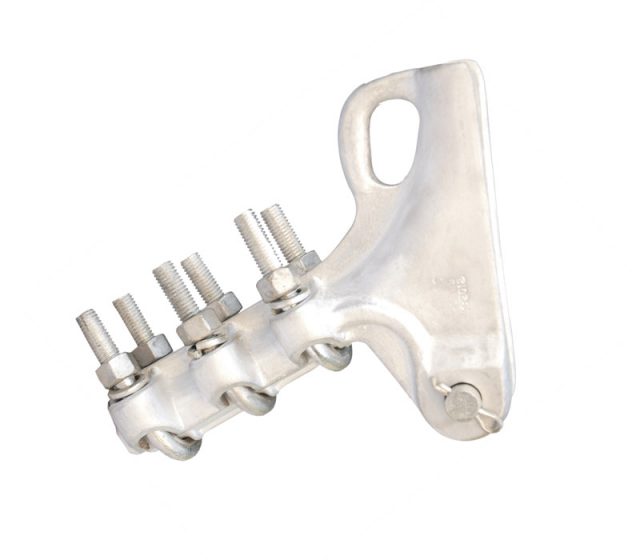
Ongoing investments and pledges in South America may speed up power integration initiatives for sustainable energy. In 2025, the area is likely to experience a rise in the integration of electricity at a regional level. Significant initiatives encompass the Southern cone Power Market, Andean Community of Nations, and Central American Integration. The Andean countries have the ability to include trade and regulatory regulations to incorporate grids into their national laws. A few years ago, Brazil, Colombia, Ecuador, and Peru started collaborating on integration efforts. Countries can strengthen their energy security and decrease susceptibility to supply interruptions, by diversifying energy sources and sharing resources. It is also possible to incorporate smart grid technologies to enhance the effectiveness and dependability of power systems. Deadend clamps play a vital role in the power connection throughout South American areas.
Deadend clamps offer the safe and reliable operation of power transmission and distribution systems. They prevent power outages and ease the integration of renewable energy. This contributes to the region’s energy security and sustainability. The clamps are able to withstand mechanical loads affecting power lines. These include tension, compression and bending forces. This is crucial for maintaining the integrity of the power line. The deadend clamps are designed to reduce the risk of electrical arcing which can damage equipment and power outages. This provides a safe and reliable termination point of power conductors. A deadend clamp guarantees the safe shut down of electricity lines and the dependability of the power network. This article looks at the importance of deadend clamps in the power integration projects across south America.
The importance of deadend clamps in South America’s power integration
Deadend clamps contribute to the effective and reliable power transmission in South America. They help to stabilize high-tension lines across challenging terrains and climates in the region. This eases long-distance and cross-border energy transfer and support the shift towards renewable energy. Deadend clamps ensure the power infrastructure remains resilient, reliable and capable of meeting growing energy needs. The following are the functions of deadend clamps in South America’s power integration.

- Securing transmission lines – deadend clamps secure transmission lines at endpoints to ensure they withstand the forces. They also prevent sagging which could lead to line damage, short circuits and outages.
- Enhanced stability – south America consists of variable weather climates including winds, rain, and high humidity. Deadend clamps are from corrosion-resistant materials like aluminum or steel to withstand these conditions. This ensures the power lines remain secure to prevent line detachment or failure.
- Cross-border power exchange – countries like Argentina, Bolivia, Brazil, and Chile are interconnecting their power systems. Deadend clamps support the heavy-duty transmission lines for the cross-border connections. They also help to maintain high-voltage stability for cross-border integration.
- Reducing maintenance costs – deadend clamps need minimal maintenance due to their robust construction. The clamps prevent issues like sagging which means lower maintenance costs and reduced risk of outages.
- Renewable energy integration – the shift to renewable energy sources requires reliable transmission networks. Deadend clamps secure transmission lines that transport renewable energy to the grid. This contributes to the stable, green energy infrastructure across the region.
Current tendencies that back up the integration of power in South America.
The integration of power in South America relies on factors that focus the growth of renewables and improving the stability of the grid. It also utilizes cutting-edge technology to ease international energy exchange. These patterns are changing the energy scene in the region and establishing South America as a prominent player in sustainable energy incorporation. At TTF Power, we provide high quality overhead line hardware, transmission hardware, distribution hardware, conductors, insulators, cutout switches, anchoring and grounding products. The trends that are shaping power integration in South America are the following.

- AI incorporation is becoming increasingly prevalent in energy management throughout South America. AI aids in predicting demand, improving power distribution, and handling fluctuating renewable energy production. Anticipatory maintenance also decreases operational interruptions and upkeep expenses. This enhances the effectiveness of a connected system.
- Decentralization and microgrids play a crucial role in ensuring consistent access to electricity. Renewable energy-powered microgrids offer a sustainable method to expand availability of electricity. This aids in the advancement of rural areas and the resilience of the grid. This is by decreasing reliance on centralized power production.
- Give attention to energy storage – energy storage technologies assist in dealing with the unpredictable variations of renewable energy sources. Battery storage and pumped hydro stabilize power supply fluctuations. They also help maintain a steady flow of electricity.
- The growth of interconnected renewable energy markets enables nations to trade renewable energy resources. This encourages the production of clean energy, leading to the development of a local market for renewable resources.
- Private investment and public-private partnerships – South American nations are looking for private investment and establishing PPS to finance integration projects. This assists in generating the necessary funds for significant projects. These include transmission lines, substations, and renewable energy plants.